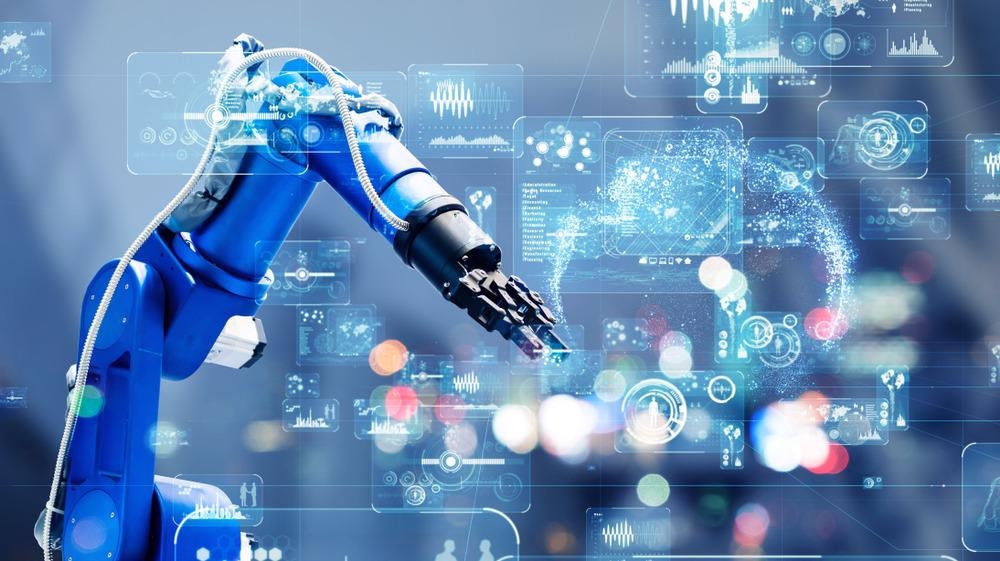Radar is a technology used to detect an object and determine its velocity and range. Primarily it works on radio waves; radar is an abbreviation for Radio Detecting And Ranging. Here we discuss radar technology applications in smart factories, the limitations and future prospects.

Image Credit: metamorworks/Shutterstock.com
How Radar Works?
Radar technology uses electromagnetic waves that travel in straight lines through space almost at a constant velocity. The waves generated through radars are reflected back from an object to the radar's receivers. The analysis of these reflected waves can provide useful information about the velocity, position, angular direction, shape, and size of that object.
What are the Industrial Applications of Radar Technology?
Radar has several applications in several industries, such as the medical sector, military, engineering, and robotics.
Radar technology is fundamental in the military. It is used in fighter jets, submarines, tanks, and anti-aircraft systems to detect, predict, and intercept enemies' jets, ships, missiles, and military vehicles.
In the healthcare industry, ultra-wide-band or UWB is used for radar tomography, vital signs measurement, and breast cancer and cerebral hematoma detection. Similarly, continuous wave or CW radar is another example of radar used in medicines. Constant frequency CW radar is used to monitor cardiac and respiratory activities.
How are Radars Used in Smart Factories?
Factories that feature elements like advanced data analytics, artificial intelligence, always-on connectivity, and sensing inputs are known as smart factories. Radar technology has evolved smart factories to a new level, and it is still growing.
Smart factories are an integral part of modern and future technologies. These are characterized by self-learning systems, digitization, self-organization, and a high degree of automation. In smart factories, robots play a critical and central role.
Advancement in sensors and radar technology enables these robots and autonomous machines to perceive their environment. Through Radar technology, robots in smart factories can respond to their environmental conditions, navigate, and position themselves according to the requirement.
Radar sensors are integrated into a number of applications, including tracking systems in the security sector, fill level measurements in tanks, and automatic door openings.
Advanced technologies use radars working on higher frequencies enabling them to be used in highly complex scenarios like collision protection on vehicles and autonomous robots, personal safety in the machine's environment, or collaborative work between smart machines and humans.
Commercial Examples
Companies that commercially manufacture products involving radar technologies are rapidly improving with advancements in technology.
Leading manufacturers of radar technology are focusing on developing radars systems that operate on high frequencies. Moreover, manufacturers like Silicon Radar provide completely functional radar systems integrated into tiny silicon chips. These improvements in technology like high frequency, ultrashort wavelengths, and small-sized silicon chips enable these radar systems to produce high-resolution, sharp images, providing a breakthrough for using radar systems in a broader spectrum.
Similarly, OndoSense provides ultra-precise, robust and dependable Internet of Things radar sensor technology capable of dealing with various measurement challenges. The primary benefit of these radar systems is their speed measurement, wear thickness measurement, and level measurement, even in very harsh environmental conditions like dust, fog, fire and smoke.
In addition, the specialized OndoNet software enables their radar systems to operate as an intelligent sensor network. Moreover, their pre-calibrated radar sensors can be integrated into any PLC control.
What are the Limitations of Radar Systems?
One of the major limitations of some of the radars technologies is their dependency on the object's shape that is detected. For example, advanced militaries have built fighter aircraft that are not detectable on radars. These special aircraft work on stealth technology in which the exterior body is designed in such a way that it does not reflect any significant radar waves back to the radar.
Instead, these waves are either absorbed or dispersed at different angles making the aircraft invisible to the radars. Similar technologies are being used in submarines and missiles as well.
Another limitation of radar systems is that the collected data may not be accurate if the object under investigation is handheld. Radars may also detect unwanted objects, and this interference can cause noise in the system. Moreover, radar systems cannot differentiate between colors and cannot be used for such applications.
Future Prospects of Radar Technology
The future of radar technology in smart factories looks very promising. Modern-day radars are capable of providing 3D images of the desired object, which enables the handlers to use them for a variety of applications.
The smart factories are moving from 3D radar technology to 4D radar technology, allowing them to provide real-time imaging of the 4D point cloud. This will help the users to track, detect, and classify 3D objects more accurately and precisely in real-time.
References and Further Reading
Innosent.de. Industry 4.0 Radar Technology for industrial Safety Solutions. [online] Available at: https://www.innosent.de/en/sector/robotic-smart-factory/
Lidarradar.com. Advantages and Disadvantages of RADAR Systems – LiDAR and RADAR Information. [online] Available at: https://lidarradar.com/info/advantages-and-disadvantages-of-radar-systems
Mostov, K., Liptsen, E., & Boutchko, R. (2010). Medical applications of shortwave FM radar: remote monitoring of cardiac and respiratory motion. Medical physics, 37(3), 1332–1338. https://doi.org/10.1118/1.3267038
Ondosense.com. Applications of our Radar Sensors in the Industry 4.0| OndoSense. [online] Available at: https://ondosense.com/en/applications/
Silicon Radar GmbH. Application of Radar Technology - Silicon Radar GmbH. [online] Available at: https://siliconradar.com/applications/
Disclaimer: The views expressed here are those of the author expressed in their private capacity and do not necessarily represent the views of AZoM.com Limited T/A AZoNetwork the owner and operator of this website. This disclaimer forms part of the Terms and conditions of use of this website.